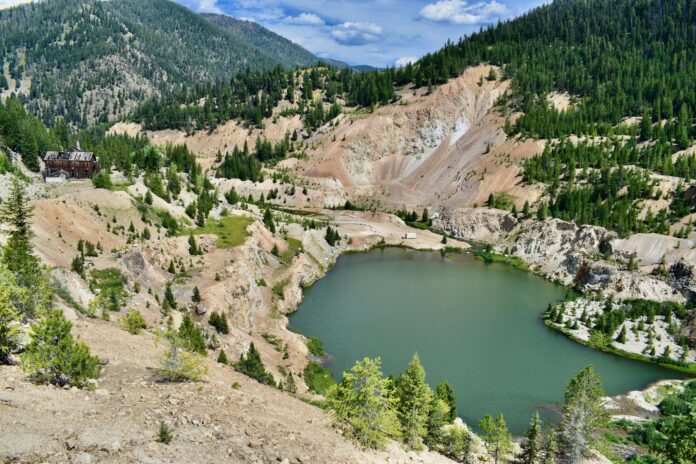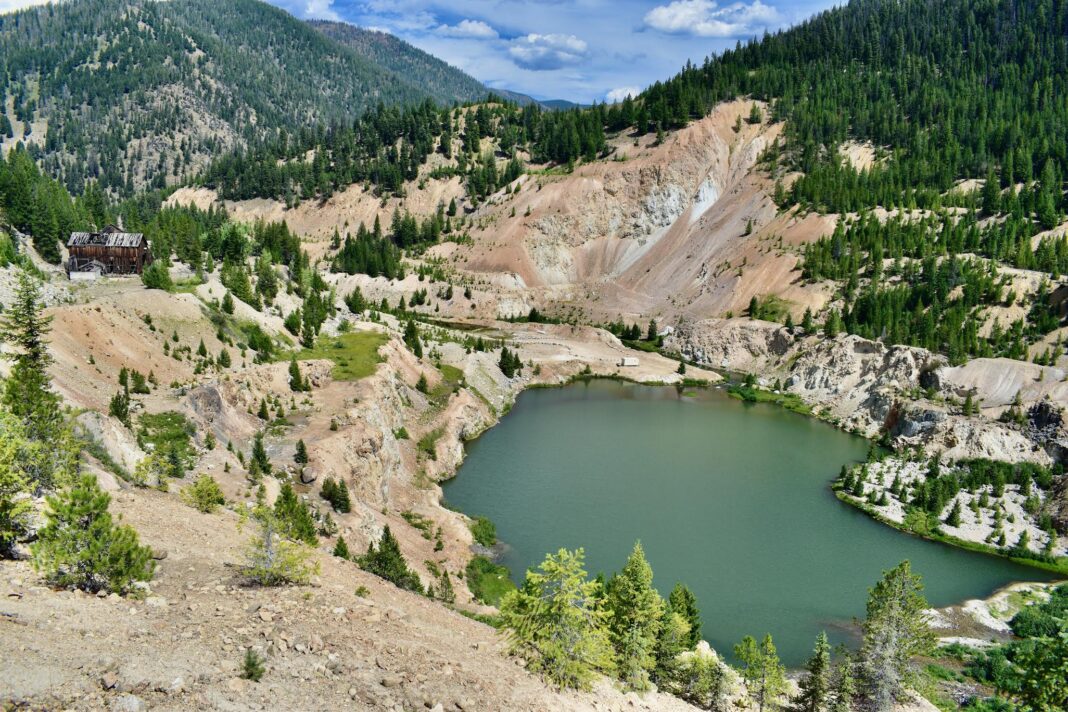Perpetua Resources Corp. is raising more money to advance its proposed gold and antimony mine in the far eastern reaches of Valley County.
The Boise-based mining company announced a stock offering on Monday that will make at least 3.4 million more common shares of the company available at a price of $10.17 per share.
Another 516,000 shares could then be purchased within 30 days by buyers of the first 3.4 million shares, under the offering, which Perpetua expects to yield between $35 million and $40 million.
The funding will be used for down payments on materials needed to build the mine, which could receive approval to begin construction as soon as next year.
“Lead times vary, and for projects like ours, the most critical long lead time items are a year or more out,” said Natalie Podgorski, a Perpetua spokesperson.
Among those materials are power line equipment and components for facilities at the mine site, which is about 40 air miles east of McCall in the historic Stibnite Mining District.
The money from the stock offering will also be used to engineer more detailed plans for the mine and general corporate expenses, the company said.
Overall, the offering raises Perpetua’s total outstanding shares to more than 70 million.
Paulson backing
Perpetua’s largest investor is Paulson & Co., a New York City investment firm valued at $3.8 billion by Forbes. Paulson owns about 38.3% of Perpetua with about 24.8 million shares.
Paulson invested a total of about $85 million in 2016, 2020 and 2021 into Perpetua, which was known as Midas Gold until 2021
Stephen Quin, who founded Midas Gold in 2009, and five other corporate board members stepped down in December 2020 amid Paulson’s demands for leadership changes.
Paulson’s position dwarfs that of Perpetua’s four other largest investors, which hold a combined 15% of the company’s stock.
Sun Valley Investments, a Ketchum equity firm, is the company’s second-largest investor with about 3 million shares, or 4.6% of the company.
Sprott Asset Management, a global investment firm headquartered in Toronto, is Perpetua’s third-largest investor, holding about 2.8 million shares worth 4.3% of the company.
Department of Defense funding
Perpetua has also received $75 million in the last two years from the U.S. Department of Defense to help advance the project.
Much of the funding has been awarded through the Defense Production Act, a federal law that allows government investment in private companies to secure resources needed for national security.
Federal officials have labeled Stibnite as a possible American source of antimony, which in 2018 was classified as a “critical mineral” by the U.S. Department of the Interior.
Stibnite could become the only mine in the United States that produces antimony. It would provide up to 35% of national commercial demand for antimony in the first six years of mining, according to Perpetua.
The antimony would be used by the defense department for munitions, mortars, artillery, mines, flares, grenades and missiles.
China, Russia, and Tajikistan produced about 79% of all mined antimony in 2023, according to data from the U.S. Geologic Survey.
Project timeline
Perpetua’s exploration of the Stibnite Mining District began with drilling in 2009. Since then, the company has spent more than $300 million studying the mine site and collecting environmental data.
In September, the Payette National Forest, the lead permitting agency for the project, issued a preliminary approval that could allow the mine to move forward.
A final decision from the Payette is expected early next year. Approval would trigger a three-year construction phase that Perpetua estimates would cost about $1.26 billion, followed by 12 to 15 years of mining.
Perpetua plans to extract about $6 billion in gold, silver, and antimony from Stibnite, the site of historic mining operations during World War II and as far back as 1899.
The mine could produce an estimated 148 million pounds of antimony and 4.8 million ounces of gold, which would account for 94% of the mine’s estimated revenue.
The metals would be extracted from three open pit mines totaling about 473 acres within the 1,740-acre project zone, which is about three miles from the Frank Church – River of No Return Wilderness.
Opponents of the mine fear it could pollute the East Fork South Fork Salmon River, which flows through the project site, and cause other environmental damage.
Water quality in the East Fork and other streams at the proposed mine site do not currently meet federal drinking water standards due to high concentrations of arsenic and antimony from pollutants left by previous mining companies.
Perpetua’s mining proposal is authorized by the General Mining Act of 1872, a federal law that allows anyone to patent mining claims on public land.
A review of the project began in 2016 under the National Environmental Policy Act, a federal law that requires all projects that could affect natural resources to be studied for environmental harm.






